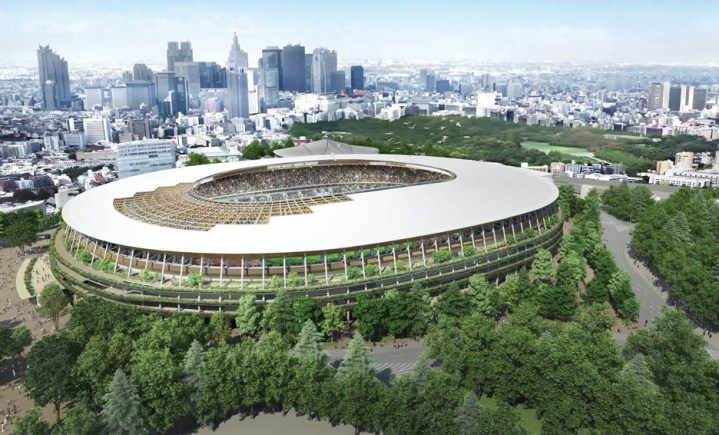
The problem? It failed to notice there’s no place for the Olympic cauldron.
Of course, an Olympic stadium really isn’t an Olympic stadium without its famous flame, burning brightly as a symbol of the struggle for perfection and fight for victory, among other things.
Complicating the search for a solution is the fact that much of the new structure, designed by Japanese architect Kengo Kuma, is made from wood, which as we all know doesn’t really mix too well with fire.
“It appears things were proceeding under the old plans without much discussion [of where to put the cauldron,]” Olympics Minister Toshiaki Endo said.
He added, “The lighting of the flame is the main event of the Olympics. As for exactly how it will be done and where the cauldron will be, that will be discussed at a later date.”
The Japan Sports Council (JSC), which is overseeing the stadium’s construction, selected a new stadium design in December after increasing costs forced it to reject the original design by British-Iraqi architect Zaha Hadid.
“When we asked the organizing committee about what it wanted for the stadium, no mention was made about having the Olympic cauldron within the stadium,” a JSC official said. “We did not consider the location of the cauldron when we were seeking out new designs.”

It appears the JSC was planning to locate the cauldron outside the stadium, though as Japan’s Asahi news outlet notes, “International Olympic Committee provisions state that the cauldron should, in principle, be located within the main stadium and be visible to all those in the venue.”
A member of the Japanese Olympic Committee told the news outlet that putting the flame outside the stadium would be “disgraceful” as it’d be “unprecedented for a summer Olympics.”
It’s hoped a solution will be found in the coming weeks, though the snafu means Japan’s efforts to keep a lid on costs for the Games look set to take another hit.


